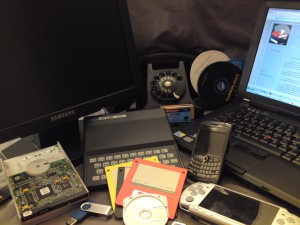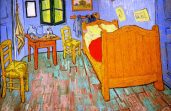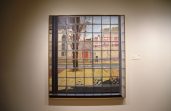Digital Giant – Robert Noyce

Do you know that you are Connected to Robert Noyce and Gordon Moore, and actually without them, none of us would be Connected, or at least not as quickly.
There are the two people who are given credit for the integrated circuit, which would be the foundation, of the computing industry for decades. In the future, look for more about Gordon Moore, but at the moment, I would like to focus on Robert Noyce.
Jack Kilby, from Texas Instruments, who first applied for a patent in September, 1958, for a single semiconductor silicon block holding all the required components, creating the first integrated circuit; he would go on to invent those pocket calculators that saw so many through mathematics. The second person to apply for a patent, soon after Jack Kirby, for the integrated circuit, was Robert Noyce. Robert Noyce, along with seven other men started Fairchild Semiconductor, after having left Shockley Semiconductor Laboratory, and would be responsible for being able to mass produce the integrated circuit.
Robert Noyce was a digital giant. He personally changed the world, which we live in today, through his invention and manufacturing of the integrated circuit. While Jack Kilby would receive the patent for the first design of the integrated circuit, it would be Robert Noyce who would change the design and make the integrated circuit mass-producible. Robert Noyce would leave Fairchild Semiconductor, with his colleague Gordon Moore, in 1968, and together they would build the largest manufacturers of integrated circuits in the world, known as Intel.
What is the integrated circuit and why is the integrated circuit considered to be important to us today?
Prior to the integrated circuit, an electric circuit would be used in everything from transistor radios, to televisions, to any device that you would plug in. An electric circuit is made up of transistors, resistors, capacitors and diodes, each component providing dialogue needed in which to run a device. A transistor can turn electricity on and off, or amplify a current. For example, a transistor can amplify sound. A resistor can limit the control of electricity which in turn can control the amount of the current, such as volume for sound. A capacitor can collect electricity and the diode can stop electricity allowing the current to pass only when certain conditions are satisfied, such as flash on a camera. The capacitor would hold the electricity and when a button was pressed on a camera, the condition would be met, and the flow of electricity would be released for the light needed.
However there were many problems with the electric circuit model. Let me illustrate. I own a 1979 Space Invaders Arcade Game, which is made up of several electric circuit boards, all required for the game to work. There is a circuit board for sound, another for visual effects, and another for power. Each circuit board needs to interact with the correct voltage. But it is not unusual for one of the boards to malfunction due to a transistor providing too much power to another component, thus destroying the electric circuit board, and my game not working properly.
The integrated circuit would solve the problem of a device needing many electric circuit boards. The Integrated circuit would combine the transistor, resistor, capacitor and diode into a single semiconductor silicon block. All the required electric components held on a single chip would bring birth to a digital revolution that would usher in a world of interconnected devices. Today our automobiles are hotspots, mobile devices can interact with stores via geographical locators letting you know sales or food you may be interested in, fit devices can connect to your health care providers and the list will continue to grow.
Where do we go from here? The dawning of the integrated circuit has ushered in the Internet of Things, IoT. Within our lifetime, we have seen remarkable changes to everyday communication. We have seen newspapers and magazines close and give way to customized digital content that is delivered to any device you choose. Mail has become email; rarely do you receive greeting cards or personal letters. Shopping is no longer a day at the mall, unless you choose, but rather finding the perfect size, the perfect color and the perfect style, with free delivery through an electric device. And only on occasion do we write out a check for a bill. If the bill is not automatically deducted, it is not unusual to be able to go online and pay.
I am always amazed at people who have the vision to see the possibility of change. And while I believe that Robert Noyce had some idea of the possibilities of the integrated circuit, I wonder if he ever imagined all of these changes that would come from his design?
Now more than ever, stay safely Connected.










